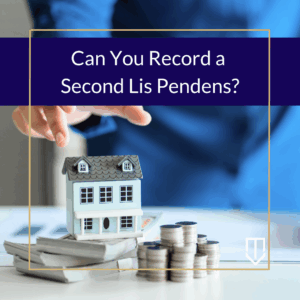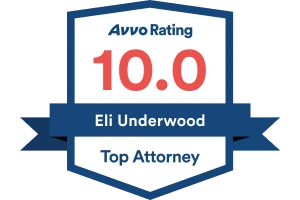 Yes. In California, you can record a second lis pendens on the same property, with the court’s permission, if the first is expunged. A lis pendens, or notice of pendency of action, is filed in any lawsuit affecting title or right to possession of real property, like partition actions. Under California’s Code of Civil Procedure, individuals can file a second lis pendens on the same property with the court’s permission, if the filing meets all statutory requirements.
Yes. In California, you can record a second lis pendens on the same property, with the court’s permission, if the first is expunged. A lis pendens, or notice of pendency of action, is filed in any lawsuit affecting title or right to possession of real property, like partition actions. Under California’s Code of Civil Procedure, individuals can file a second lis pendens on the same property with the court’s permission, if the filing meets all statutory requirements.
What is a Lis Pendens?
A Lis Pendens is a recorded document that notifies prospective buyers, encumbrancers, and transferees of real property that pending litigation affects the subject property. (Civ. Proc. Code., § 405.20; Amalgamated Bank v. Superior Court (2007) 149 Cal.App.4th 1003 1011.) By definition, a lis pendens provides constructive notice of a filed action that affects the title or right of possession of the parcel of real property described in the notice. (Kirkeby v. Superior Court (2004) 33 Cal.4th 642, 647.) Functionally, lis pendens act as a cloud protecting the property by effectively preventing its sale or encumbrance until the litigation ends or the lis pendens is expunged. (Amalgamated Bank v. Superior Court 149 Cal.App.4th at 1011.)
What is the Effect of Expunging a Lis Pendens?
California’s Code of Civil Procedure codifies the state’s lis pendens scheme, defining “notice of pendency action” or “notice” to mean notice of a pending action in which a real property claim is alleged. (Code Civ. Proc., § 405.2; Park 100 Investment Group II, LLC v. Ryan (2009) 180 Cal.App.4th 795, 808.) Under Section 405.30, courts expunge lis pendens when the underlying action does not allege a real property claim or when the claimant fails to establish the probable validity of the alleged real property claim. (De Martini v. Superior Court (2024) 98 Cal.App.5th 1269, 1275; Code Civ. Proc., § 405.30.)
Can You File a Second Lis Pendens on the Same Property?
Historically, once the lis pendens notice is expunged, claimants cannot record a second lis pendens on the same property in the same action without the court’s approval. (Code Civ. Proc., § 405.36.) Whether claimants could, however, file a second lis pendens on the same property in a different action is an entirely separate question that the court addressed in 2024.
In De Martini v. Superior Court, De Martini’s contract with Gupta to sell a commercial real property parcel resulted in litigation when the parties couldn’t resolve disputes over the timing of defendant’s deposit payment. (98 Cal.App.5th at 1272-74.) Ultimately, an arbitrator found in Gupta’s favor, and while the parties waited for the trial court to confirm the award, the defendant filed a lis pendens against the commercial property. Once the trial court confirmed the award, the plaintiff filed a successful motion to expunge the lis pendens. (Ibid.)
Then, defendant filed a second lawsuit against the plaintiff over the same commercial property and recorded a second lis pendens without the court’s permission. Initially, the trial court denied plaintiff’s motion to expunge the lis pendens stating the court’s permission was not required to file a second lis pendens because the second filing was recorded in a separate, secondary, lawsuit. (Ibid.)
When De Martini appealed, the Court of Appeals reversed the trial court’s order holding the second lis pendens must be expunged because Gupta recorded it without the court’s permission, regardless of the current lawsuit being separate from the first. The court held that allowing Gupta to file a second lis pendens without requiring the court’s permission invited abuse of the very process the statute was created to protect. (Ibid. at 1275.)
The De Martini Court established that under California Code of Civil Procedure section 405.36 two conditions must exist for the “court’s permission” requirement to apply. (Ibid. at 1275-76.)
- The claimant’s first lis pendens on the property must have been expunged; and
- That same claimant must want to record a second lis pendens on the same property.
As such, because Gupta’s first lis pendens was expunged and Gupta now wanted to record a second lis pendens on the same property, the “court’s permission” requirement applied, meaning Gupta could file a second lis pendens, but Gupta was required to first obtain the court’s permission. (Ibid.)
Thus, California law does allow individuals to file a second lis pendens on the same property if they obtain the court’s permission. To obtain the court’s permission, parties must seek leave by filing a motion requesting the court’s permission to record a second lis pendens. (Code Civ. Proc., § 405.36.)
How Do You Expunge a Lis Pendens?
Under California law, any party or nonparty with interest in the real property affected by the lis pendens can file a motion to expunge the lis pendens in court. (Code Civ. Proc., § 405.30.) Nonparties, however, must obtain leave to intervene from the court before, or at the time they file their motion to expunge. (Ibid.)
Procedurally, claimants can file evidence or supporting declarations with their motion to expunge. Courts may allow evidence in the form of oral testimony and reserve discretion to make orders it deems just to allow for discovery by any party affected by the motion to expunge. (Code Civ. Proc., § 405.30.)
Courts order expungement of lis pendens if:
The pleading on which the lis pendens is based doesn’t allege a real property claim.
The claimant failed to establish their real property claim’s probable validity by a preponderance of the evidence. (Code Civ. Proc., § 405.32.)
Adequate relief can be secured by an undertaking. (Shoker v. Superior Court of Alameda County (2022) 74 Cal.App.5th 271.)
Claimants carry the burden of proof meaning they must establish the probable validity of their real property claim by a preponderance of the evidence. “Probable Validity” means it is more likely than not that claimant will win their claim against the defendant. (De Martini v. Superior Court 98 Cal.App.5th at 1279 citing Amalgamated Bank v. Superior Court 149 Cal.App.4th at 1016.) Courts must grant the motion to expunge unless the claimant establishes the probable validity of their real property claim against the defendant by a preponderance of the evidence.
Winning parties on a motion to expunge a lis pendens are entitled to recover attorney’s fees unless the other party acted with substantial justification, or other existing circumstances make an attorney’s fees award unjust. (Shoker v. Superior Court of Alameda County 74 Cal.App.5th at 280; Code Civ. Proc., § 405.38.)
What is an Example?
“Shawn” and “Julie” co-own a house as tenants in common in Southern California. After years of co-ownership, Shawn and Julie’s relationship deteriorates, leaving them no choice but to file for partition. While proceedings are pending, Julie records a lis pendens but ultimately dismisses the case without prejudice and expunges the lis pendens.
Two years later, Shawn still refuses to negotiate the property’s sale with Julie, so Julie files a second partition action on the same property. Before Julie can file a second lis pendens, she must obtain the court’s permission. Because Julie’s first lis pendens is expunged, and because Julie followed the proper procedures, the court grants Julie permission. Now, Julie can file a second lis pendens on the same property to give notice of the pending partition action’s effect on the real property.
Conclusion
A second lis pendens can be filed in a new action affecting the same parcel of real property if the notice complies will all of California’s statutory requirements. If sale or disposal of property is a point of contention, partition may be a solution. At Underwood Law, our partition attorneys can help you navigate your partition action efficiently and with care. We are here to help.










